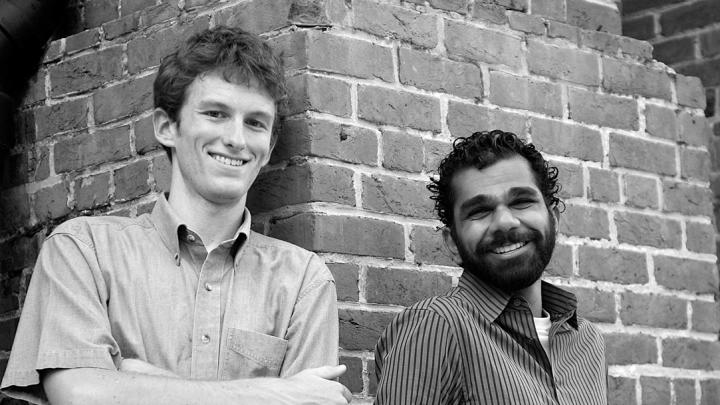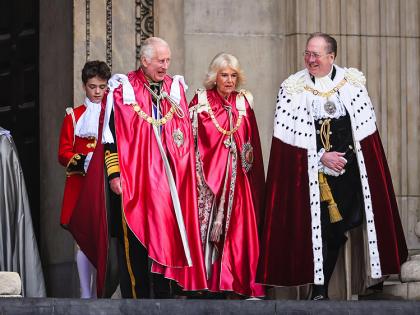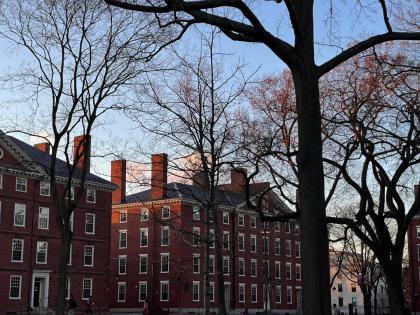On December 26, 2004, one disaster triggered recollections of another. Utpal Sandesara ’08 was watching CNN coverage of the Indian Ocean tsunami when his mother started crying. “‘This reminds me so much of what I saw back in 1979,’” he remembers her saying. He knew that his mother had survived a terrible dam failure in western India, but he had never asked for details. With his interest piqued, Sandesara looked for information about the disaster—and found nothing. “Being 18 years old and headstrong,” he recalls, “I turned to my parents and said, ‘I want to start research on this project, and maybe even write the first book about it.’” Back on campus, he recruited his friend and freshman entryway-mate Tom Wooten ’08. “I was really interested,” says Wooten. “I thought, this seems like it’ll be a big adventure.”
Six years later, the friends are authors of No One Had a Tongue to Speak (Prometheus), a multilayered account of the 1979 dam failure that destroyed the Gujarati city of Morbi and killed as many as 25,000 people. Their project began close to home, with an interview of Sandesara’s parents, but eventually took the authors—then rising juniors—on a journey across India, delving into government records and interviewing flood survivors and former government officials to understand the flood’s causes and lasting human impact.
The cause of the dam failure seems clear. The chief minister of Gujarat, who had himself volunteered in Morbi after the flood, granted the authors unprecedented access to confidential technical reports and photographs. The analysis suggests that faulty design caused the dam to give way under heavy monsoon rains. “It’s like a bathtub with a clogged drain and the faucet on—eventually water would wash over the top,” says Wooten. “Unfortunately, the top of this bathtub was made of dirt.”
The human story is more complex. In 148 interviews, the authors unearthed accounts of the disaster from families of all castes across the city. Their subjects included Sandesara’s grandparents, who were saved from certain death in downtown Morbi when a cobra prevented them from leaving their house, and a convicted murderer, who rescued 30 people during the flood. (He was pardoned for his bravery, only to be convicted 25 years later of a second murder.) Sandesara and Wooten also detail the government cover-up that stalled key inquiries into the cause of the dam failure.
In the 18 months before their research trip to India, Sandesara and Wooten encouraged and motivated each other as the project took shape. “I don’t think either one of us would have been able to do something like this on our own,” says Wooten. They contacted faculty members across many disciplines for perspectives and advice; one mentor, Kolokotrones University Professor Paul Farmer, wrote the forward to the book. As juniors, the students turned the project into a guided reading and research tutorial within social studies, which both call a critical component of their work. The book manuscript went through several iterations as its authors worked to make the intertwined narratives vivid and accessible.
Both writers have maintained their interest in public health and disaster recovery. After graduating, Sandesara worked a year for the Peruvian ministry of health; he is now studying for an M.D.-PhD. in anthropology at the University of Pennsylvania. Wooten volunteered for Teach for America in New Orleans and has been researching the aftermath of Hurricane Katrina. His second book, on the recovery from that disaster, will be published this summer.
For now, the story of the Machhu Dam-II is still on their minds. The book will be published in India this year; a translation into Gujarati is in the works. “The dam collapse is one of the worst environmental disasters in history, and no one has heard about it,” says Sandesara. “This book is an attempt to tell the story of this place—western India in 1979—this monsoon, the government cover-up that unjustly silenced this narrative for too long, and most importantly, the people who experienced this incredible suffering, and their resilience.”









